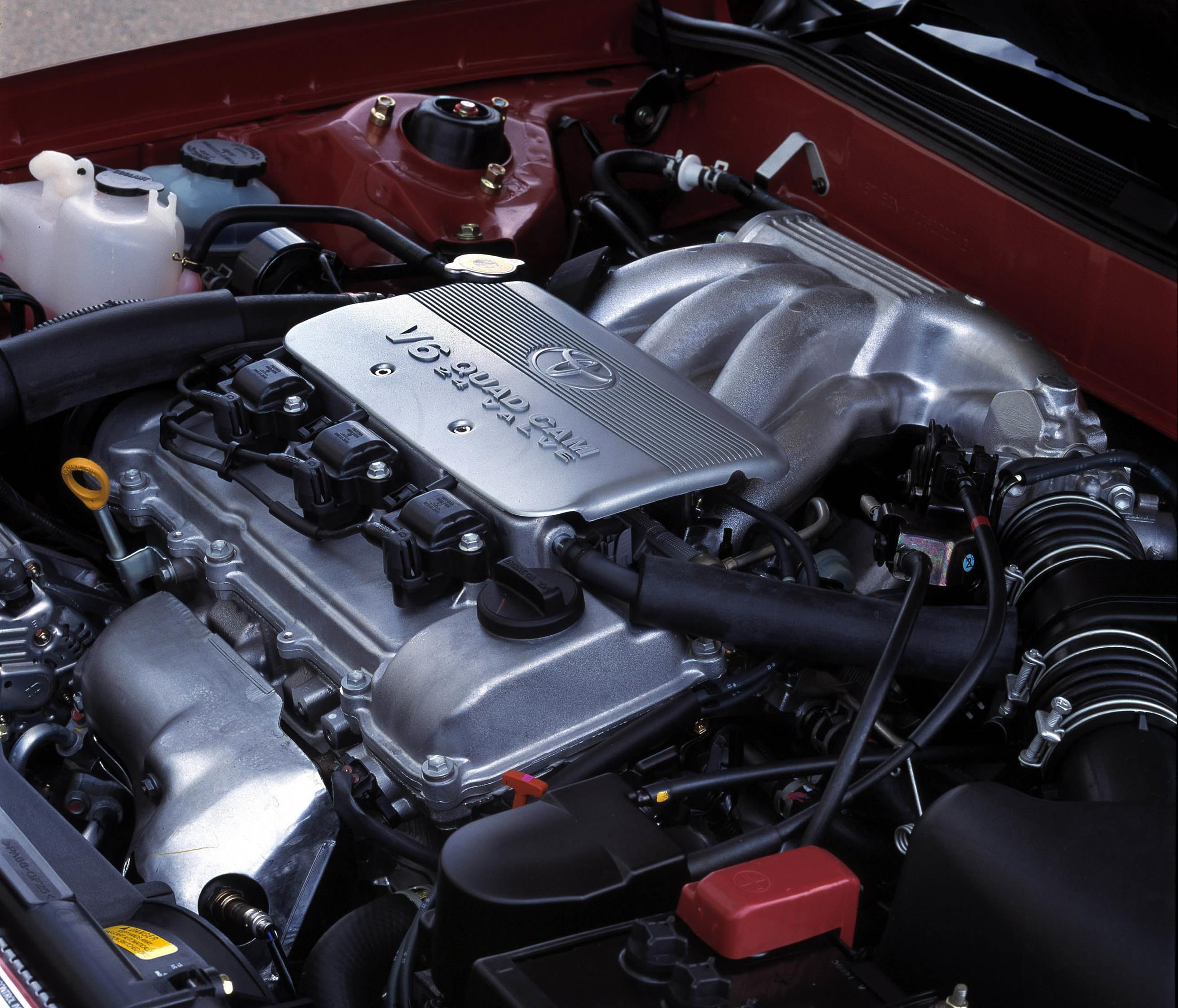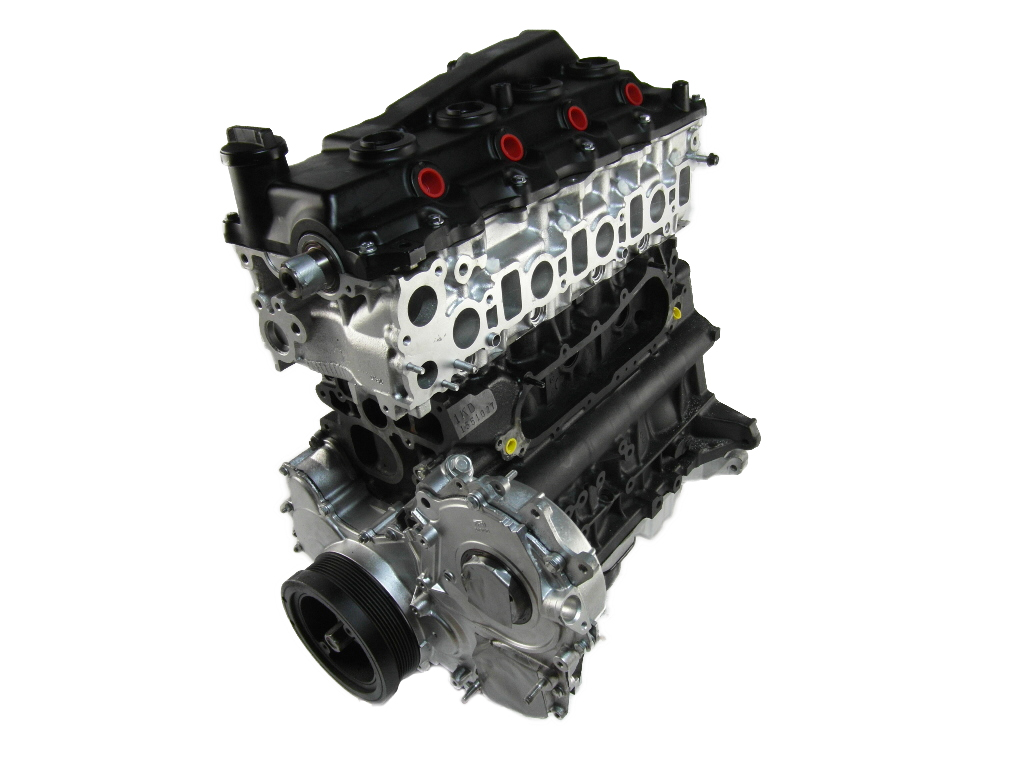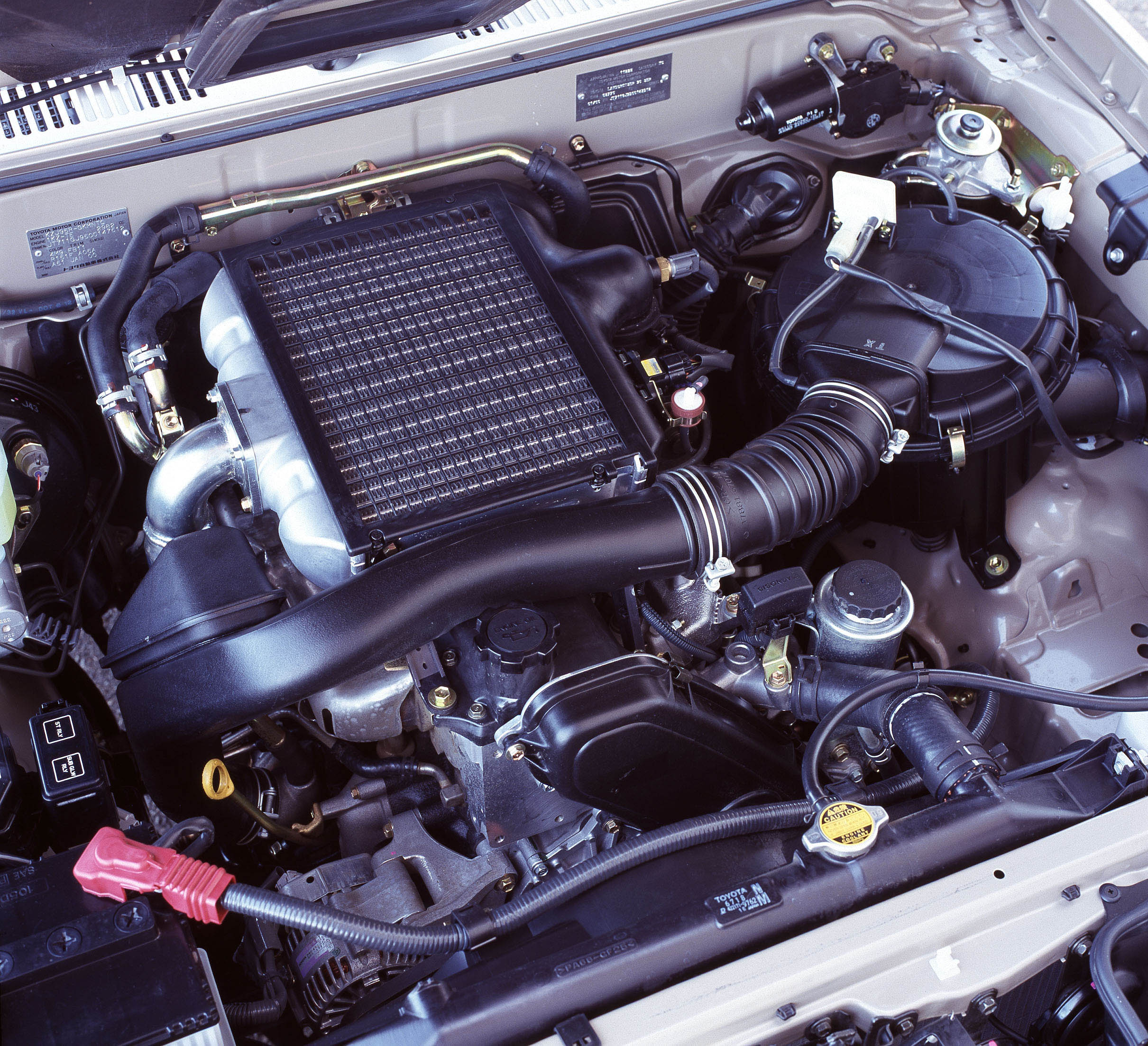The N62 won the overall International Engine of the Year award in 2002, as well as the ‘Best New Engine’ and ‘Above 4-litre’ categories.
N62 crankcase
The N62 engine had a one-piece, ‘open deck’ aluminium-silicon alloy crankcase with cylinder bores that were hardened through exposure honing – a ‘soft stripping’ process that removed the aluminium from the cylinder surface such that hard silicon particles remained. Furthermore, the N62 engine had a cast-iron crankshaft with five main bearings, fracture-split forged connecting rods and cast aluminium alloy pistons.
For the N62 engine, crankcase vapors were carried from the crankcase and into the cylinder head covers through labyrinth separators (one per cylinder head). The oil which accumulated on the walls of the labyrinth separators then flowed into the cylinder head via a siphon and then back to the sump. The remaining vapors were passed to the engine for combustion via the pressure control valve in the intake manifold.
N62 cylinder head
The N62 had die-cast aluminium cylinder heads with double overhead camshafts per cylinder bank that were made from chilled cast iron. The intake and exhaust camshafts had variable vane-type VANOS (variable valve timing) and were driven by a maintenance-free toothed chain (one for each cylinder bank).
The N62 engine also featured BMW’s ‘Valvetronic’ system which varied intake valve lift between 0.3 mm and 9.85 mm, according to engine speed and load. With partial lift, the slower cylinder filling resulted in more turbulence in the combustion chamber for better mixing and more efficient combustion.
The N62 engine featured a variable intake manifold (BMW’s Differentiated Intake System, or DISA) which enabled intake pipe length to be adjusted according to engine speed for more efficient cylinder filling and scavenging. The intake manifold was located in the engine’s ‘V’ and mounted on the cylinder head intake ports. Adjustment from the long to short intake path would commence at 3500rpm and be progressively reduced up to 6200rpm.
The N62 engine had a secondary air system in which additional air would be blown into the cylinder head exhaust ducts during the warm-up phase – this would cause thermal secondary combustion which reduced non-combusted hydrocarbons (HC) and carbon monoxide (CO) in the exhaust gas.
Each cylinder bank was fitted with a 4-2-1 exhaust manifold which, with the catalytic converter housing, formed a single component. Furthermore, a ceramic-bed pre-catalytic converter and a ceramic-bed main catalytic converter were arranged in series within the catalytic converter housing.
Ignition
The N62 engine had sequential fuel injection which was controlled by the DME 9.2 system. The cylinder firing order was 1-5-4-8-6-3-7-2.
N62B48 Update
The N62 was updated for the N62B48 engine that was developed for the 2004 BMW E53 4.8is. Based on the N62B44, bore was increased to 93.0 mm (from 92.0 mm) and stroke to 88.3 mm (from 82.7 mm) for the 4799 cc N62B48 engine. Compared to the N62B44, changes for the N62B48 engine included:
- The crankshaft bearing caps featured apertures to improve ventilation lengthways in the crankcase and reduce pump and splashing losses;
- The introduction of a steel crankshaft for greater strength;
- Symmetrically-formed and narrower connecting rods;
- A stronger aluminium-silicon alloy cylinder head;
- Revised exhaust manifolds which prevented residual gases from entering the combustion chamber to improve cylinder charge and torque progression at lower engine speeds;
- Omission of the secondary air system;
- A modified oil pan that was made from sheet steel (previously cast aluminium) and had a 16 mm lower bottom section; and,
- An increased capacity oil cooler.
N62 Technical Update (N62TU)
The N62 Technical Update (N62TU) engine was introduced in April 2005 and, compared to the N62, changes included:
- A stronger steel crankshaft (previously cast iron);
- A larger, two-channel air intake duct (developed due to lower bonnet of the E65.II and E66.II 7-Series);
- The fully variable Differentiated Intake System (DISA) was replaced by a two-stage intake system. Whereas the previous intake manifold was made from magnesium, the N62TU intake was manufactured from glass fibre reinforced plastic;
- For the inlet and exhaust valves, stem diameter was reduced from 6 mm to 5 mm and the reduced moving masses provided higher RPM capability;
- New long-life (160,000 kms) platinum spark plugs which were repositioned forward and had a hook electrode;
- Update DME 9.2.2 which had a new 56 MHz processor, LSU 4.9 lambda oxygen sensor, HFM 6 hot-film air-mass meter and oil level measurement software; and,
- Omission of the secondary air system.
| Engine | Capacity | Peak power | Peak torque | C.R. | Models | Years |
|---|---|---|---|---|---|---|
| N62B36 | 3600 cc (84.0 x 81.2) |
200kW at 6200rpm | 360Nm at 3700rpm | 10.5:1 | E65 735i, E66 735Li |
2001-08 |
| N62B40TU | 4000 cc (87.0 x 84.1) |
225kW at 6300rpm | 390Nm at 3500rpm | 10.5:1 | E60 540i (EU) | 2005-10 |
| E65 740i, E77 740Li |
2005-08 | |||||
| N62B44 | 4398 cc (92.0 x 82.7) |
235kW at 6100rpm | 440Nm at 3700rpm | 10.0:1 | E53 X5 4.4i | 2004-06 |
| 245kW at 6100rpm | 450Nm at 3600rpm | 10.5:1 | E65 745i, E66 745Li |
2001-05 | ||
| E60 545i, E61 545i |
2003-05 | |||||
| E63 645Ci, E64 645Ci |
2003-05 | |||||
| N62B48 | 4799 cc (93.0 x 88.3) |
265kW at 6200rpm | 500Nm at 3500rpm | 11.0:1 | E53 X5 4.8is | 2004-06 |
| N62B48TU | 4799 cc (93.0 x 88.3) |
270kW at 6300rpm | 490Nm at 3400rpm | 10.5:1 | E65 750i, E66 750Li |
2005-08 |
| E60 550i, E61 550i |
2005-10 | |||||
| E63 650i, E64 650i |
2006-10 | |||||
| E70 X5 4.8i | 2007-10 |

















